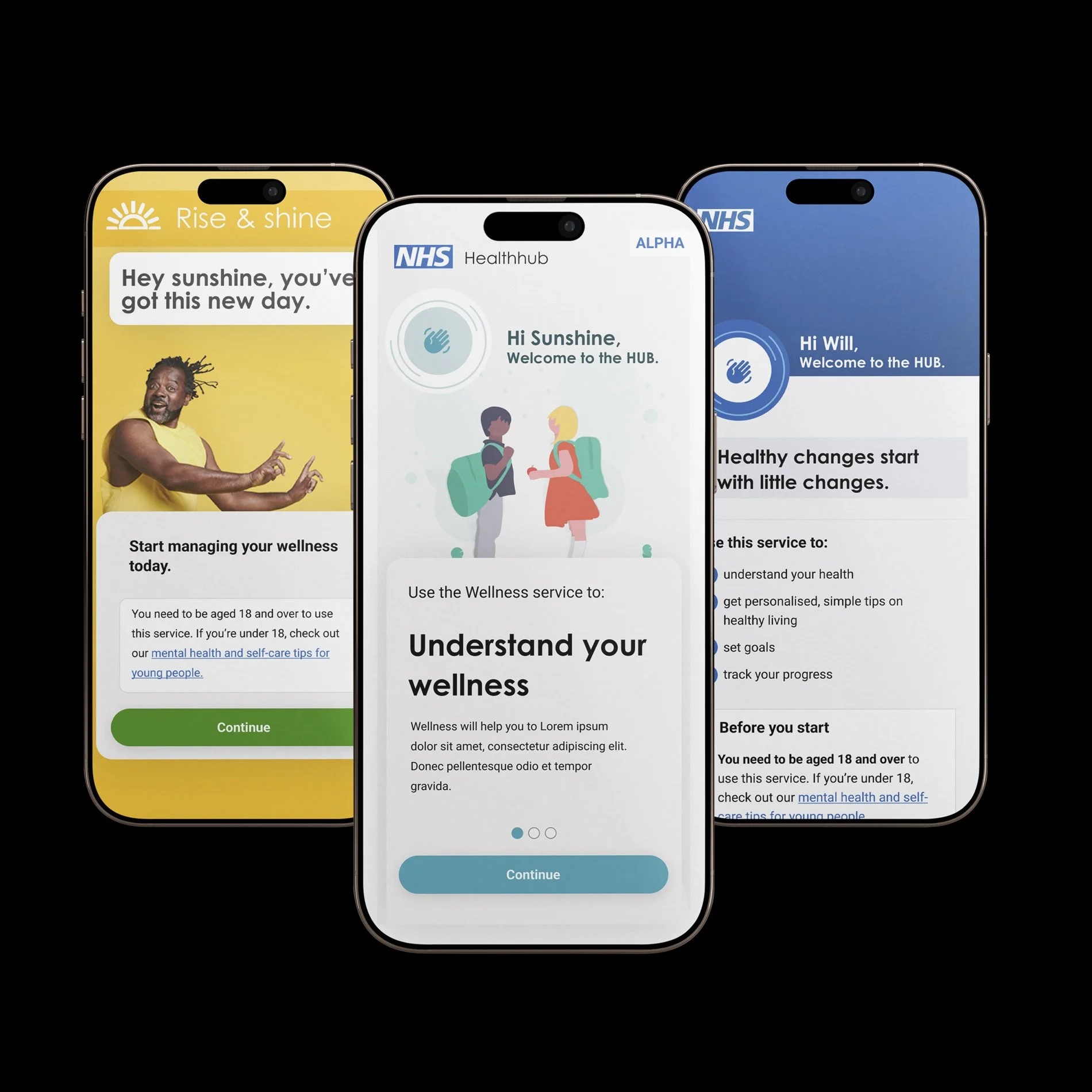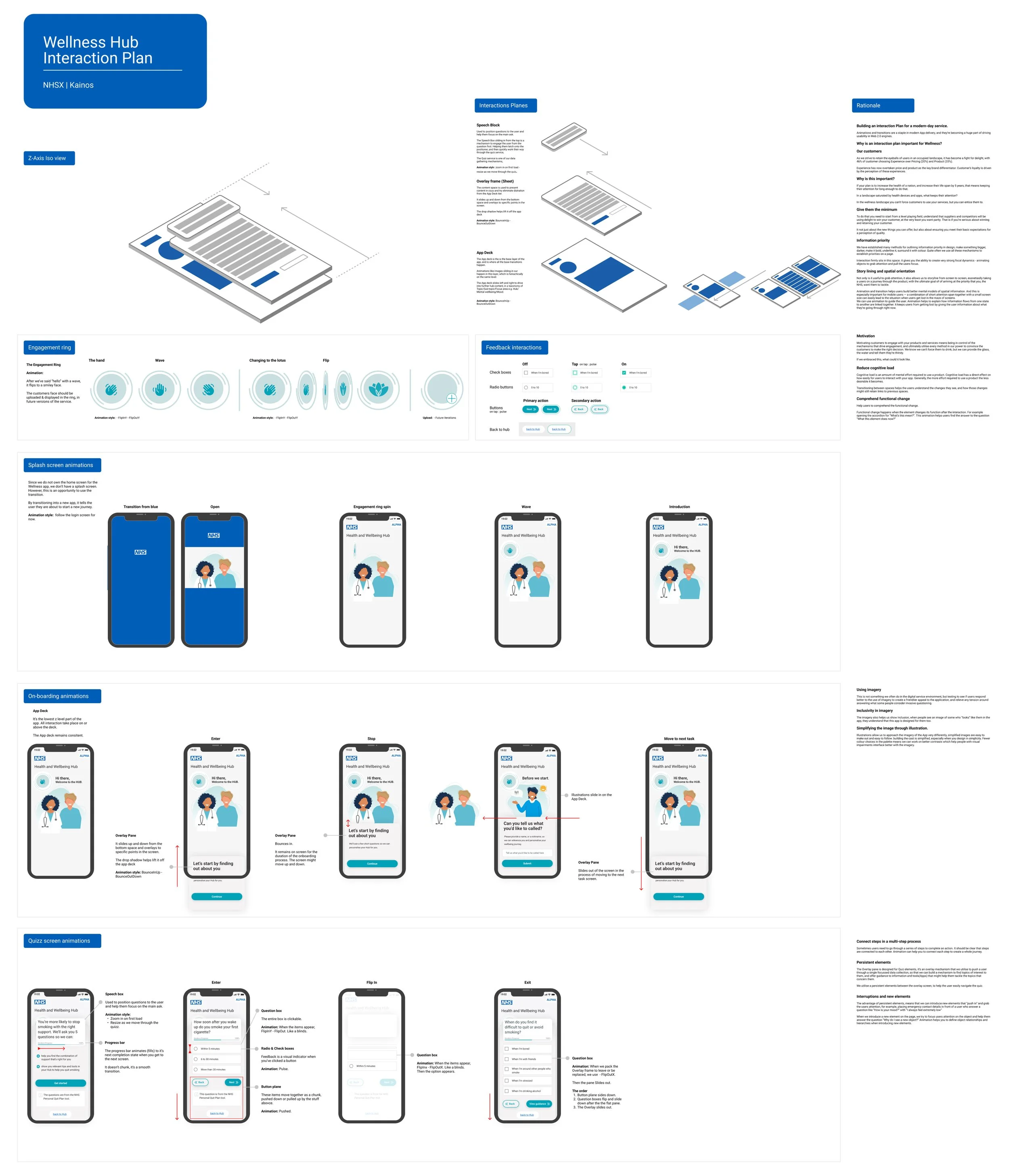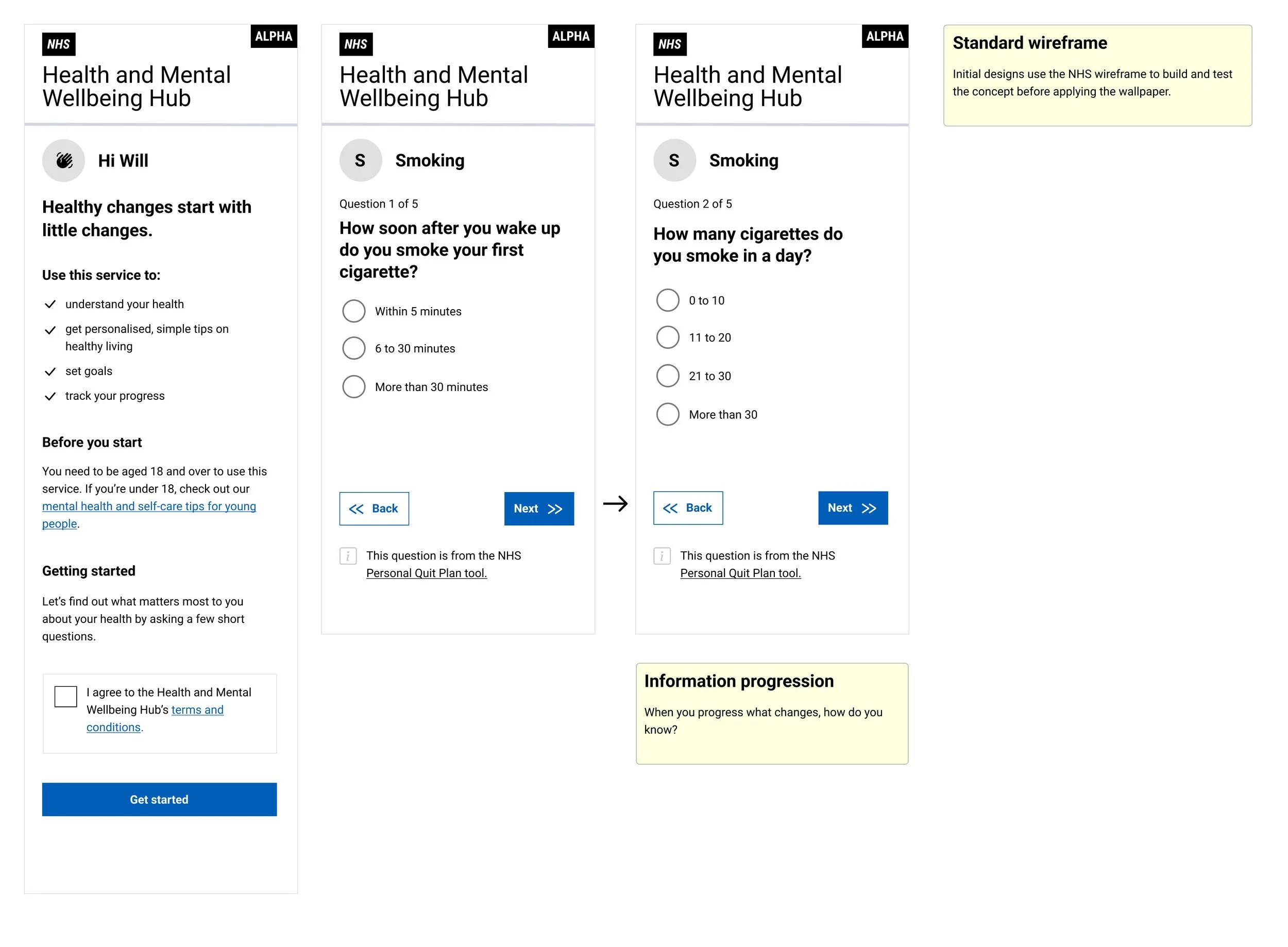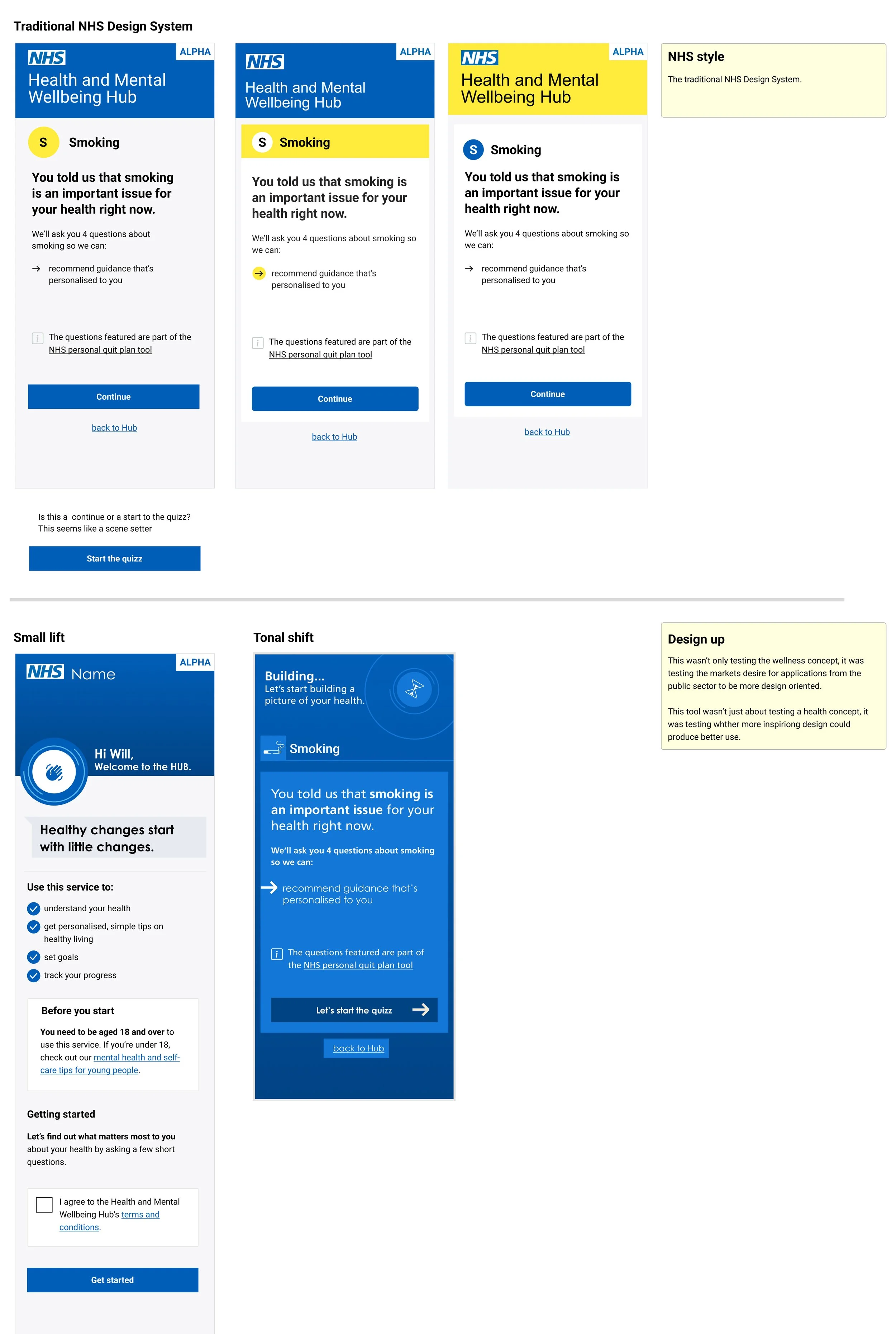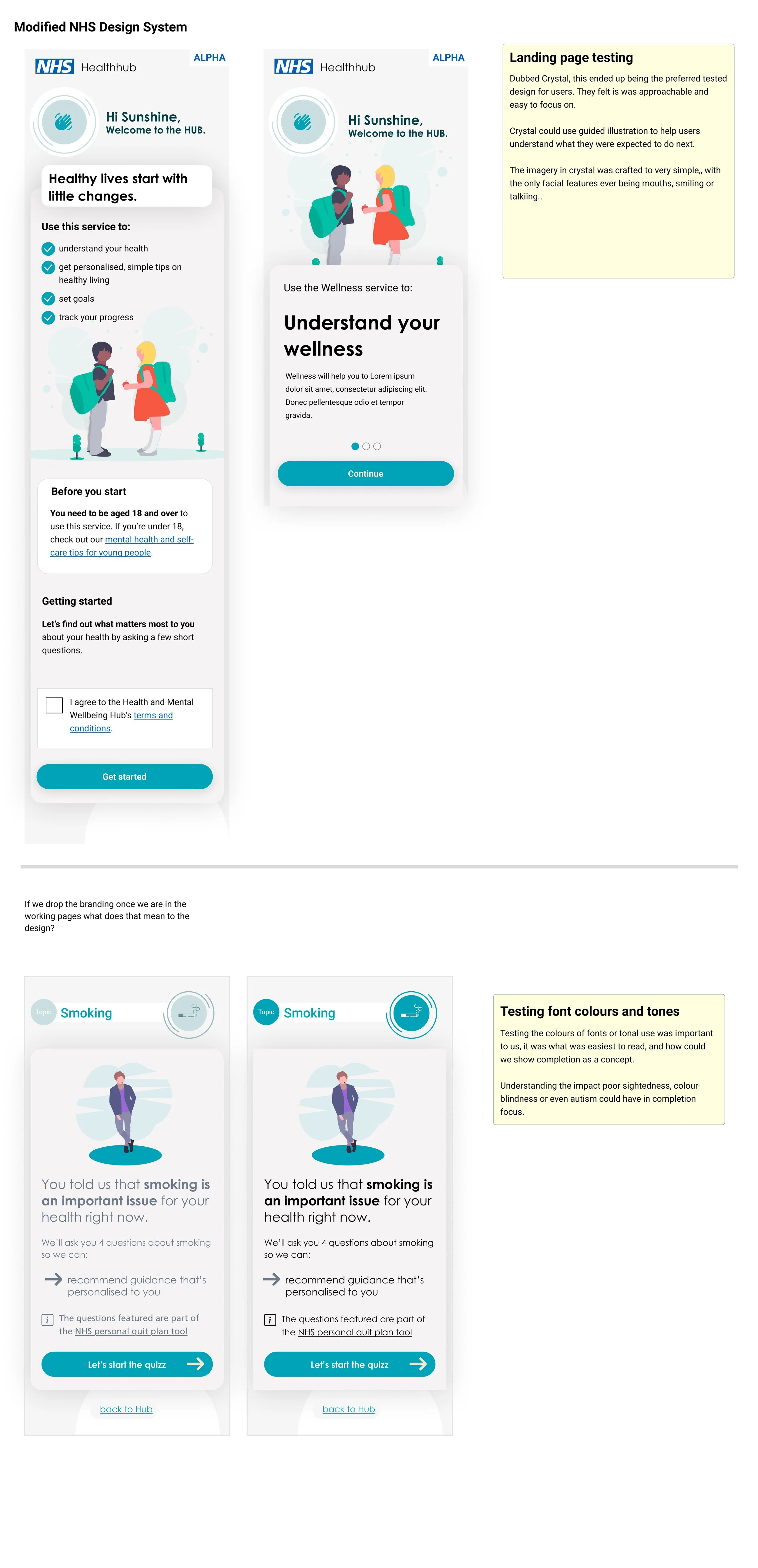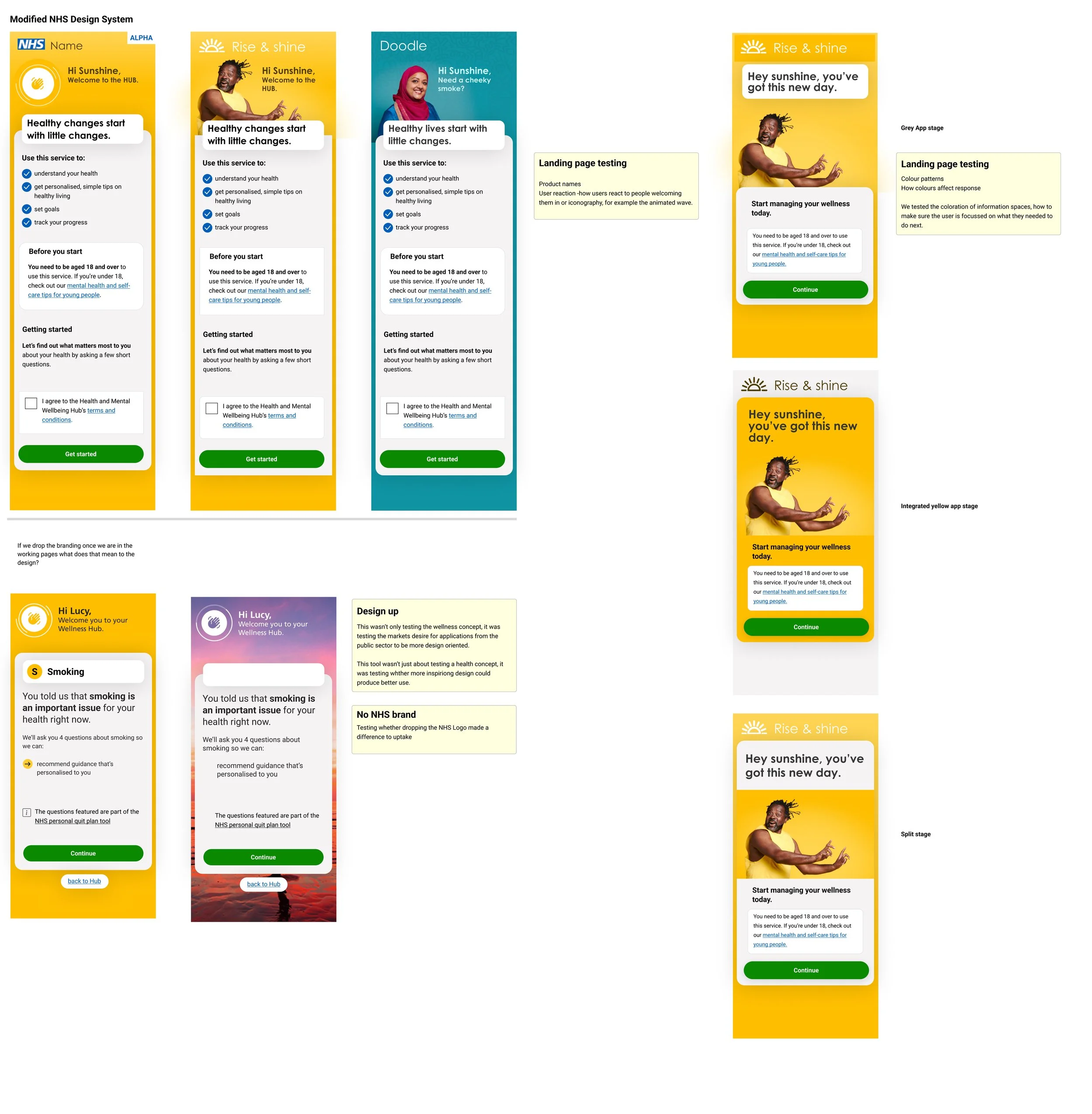A journey of discovery that saved the NHS millions
Sometimes the purpose of a service is to check whether a product/service/concept would actually touch base with an audience, and the outcome of this service test was that the customers felt like a Wellness product was work, and they would rather not engage in more work, even when it came to their own health.
We considered the test worthwhile, because we learned a lot in a very short time. In this scenario, it provided The NHS with the information they needed to make the right decision when it came to introducing a wellness product of this nature.
This project saved the NHS millions of pounds they may have invested in bringing a service to market that wasn’t going to meet the current needs of the marketplace.
Problem Statement
People don't stay engaged with their health and wellbeing over the course of their life because:
Services are not always relevant to them
They are not always aware of what actions/services they are eligible for
They engage with the prevention services too late
They struggle to maintain focus and continue a journey to better health
Service Blueprint
The Service Blueprint was a living document in this case, which was being updated throughout the process, while it initially started out as a black and white wireframe concept, it rapidly became the space for the various designers in the project to work together.
Content designers were editing on the blueprint, Visual Designers were working directly on the templates, changing elements as needed. User Experience Designers we proposing UX methods on the Blueprint itself. The Blueprint itself fed directly into a Figma prototype, so we could posit and test concepts in minutes.
This provided a rapid turnaround of “tested” ideas, feeding documentation that went straight to the NHS Board. The entire project went from inception to completion in 4 weeks.
This project was a fantastic success story, the lightbulb moment in this project was that we could test an idea and accept failure as a positive, rather than investing massively in it and then trying to force it to work because of the sheer weight of investment.
Interaction Plan
Designing for your users
Modern apps and websites use movement and animation to make things easier to use. As a service designer, your job is to plan these interactions carefully.
Why is this plan important for wellness?
Your customers expect a great experience, not just a good price or product. Research shows that good user experience is now more important than both price and product for keeping customers happy.
If your goal is to improve the health of the nation, you must keep users’ attention long enough for them to use your service. In a market full of health devices and apps, animation can:
Keep users engaged: Animation helps keep users interested in your service.
Attract attention: It guides users to the most important information on the screen.
Help users find their way
Animations also help users find their way through your service.
Guide their journey: They can be used to tell a story, moving the user from one screen to the next toward a goal you have set.
Prevent them from getting lost: Animation is especially helpful for mobile users with short attention spans and small screens. It helps them understand how different screens are connected, so they don't get lost.
Wireframes
We used the NHS Design System to rapidly build out an initial testing concept.
Setting up the initial screens for the wireframe meant that content designers could get in early and start working on the language we needed to tell the story. This all happened on the same Figma Board.
While content designers were working on the content needed for each screen (The flow was provided by Service) the Visual Designers were working on themes that could be applied.
Styling the service
As part of the NHS method, we wanted to test if making a change to the NHS brand in specific scenarios would have a positive impact on a user’s experience. The NHS theorized that imagery might help users engage more with a supportive product that promoted a proactive approach to “Wellness”.
That meant taking the identical product concept and re-skinning, with the purpose of testing with a pool of users. The result would give us a clear indication about whether there was space in the NHS brand to have a tailored storyline, which could be used to tell a better story to the user.
We created an NHS base style, using the existing NHS Style, and then we extrapolated that base design into various different graphic versions
Version 1 : Traditional NHS Design system
We used the existing NHS Design system to build out the story.
Version 2 : Illustrated Storyline
This version introduced a very simple illustrative approach, using basic vector people and scenarios to help illustrate tasks or actions we required the user to perform.
Version 3 : Photographic Storyline
We built a version using a more photography based solution to see if people connected better with real images of real people.
The Result
Sometimes the purpose of a service is to check whether a product/service/concept would actually touch base with an audience, and the outcome of this service test was that the customers felt like a Wellness product was work, and they would rather not engage in more work, even when it came to their own health.
We considered the test worthwhile, because we learned a lot in a very short time. In this scenario, it provided us with the information we needed to make the right decision when it came to introducing a wellness product of this nature. We learned that if the NHS did ever produce a wellness product through the NHS, it would require a much deeper integration, which would need to provide a genuine level of dedication to create something usable and desirable for the National audience.
Therefore, this project saved the NHS millions of pounds they may have invested in bringing a service to market that wasn’t going to meet the needs of the marketplace.

